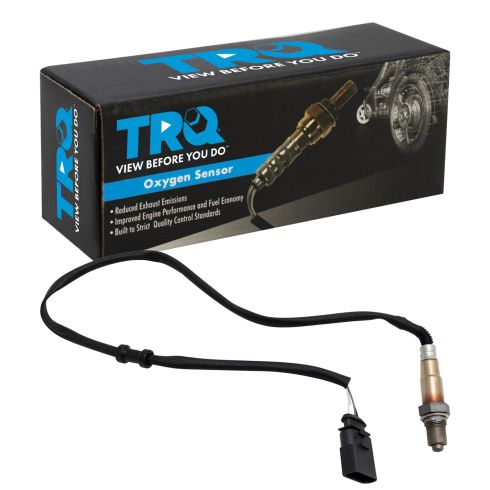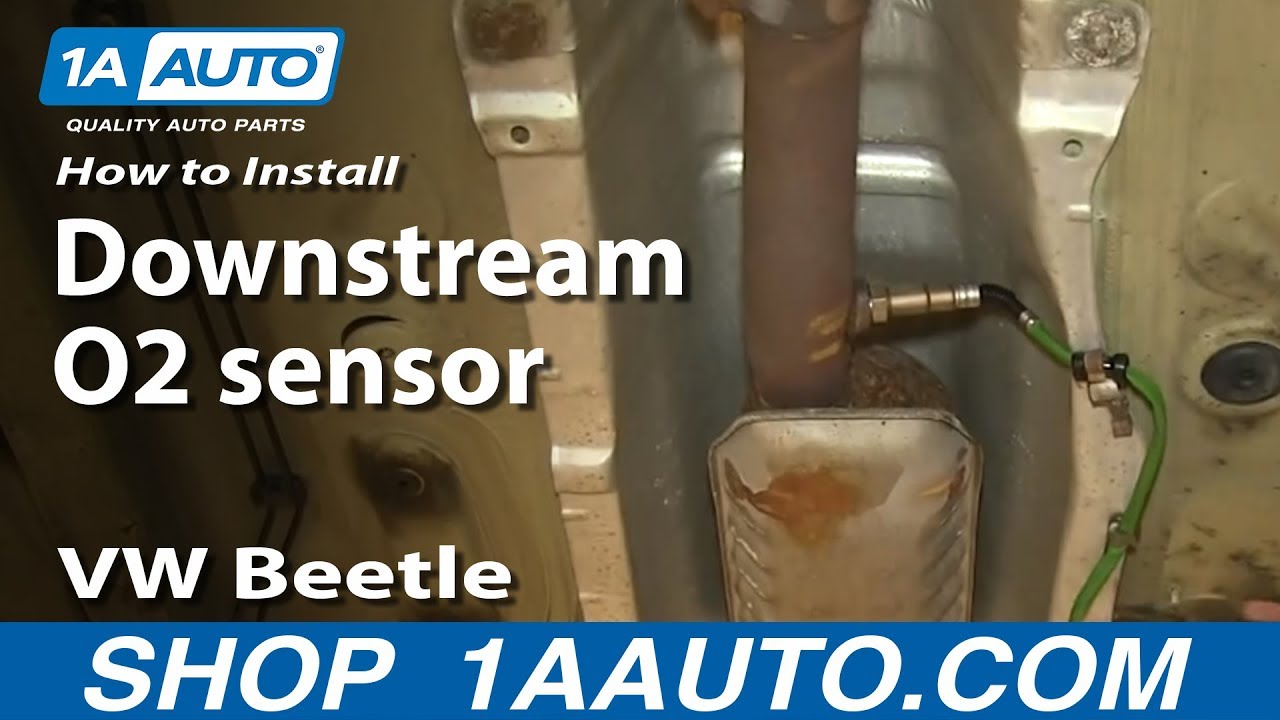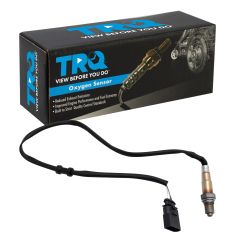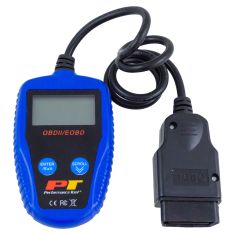Replaces
2004 Porsche Cayenne V6 3.2L Downstream Left O2 Oxygen Sensor TRQ OSA61197

OSA61197
This part doesn’t fit a . Select from parts that fit.
Specify your vehicle's year, make and model to guarantee fit.
This part doesn't fit a . Select from parts that fit.
Buy in the next and
Get it by: Tuesday, Dec 09 with expedited shipping
Frequently bought together
Specify your vehicle's year, make and model to guarantee fit.
This part doesn't fit a . Select from parts that fit.
Part Details
- 22 mm
- 0.87 in
- Specific
- 18 mm
- 0.71 in
- 4
- Male
- Blade
- 32.68 in
- 830 mm
- M18x1.5-6e
- Threaded
- Oblong
- Male
- Narrow-Band
- Yes
- 654 mm
- 25.75 in
- Planar
- 4
- Standard Replacement
Specifications
- Downstream Left
- V6 3.2L
About TRQ:
TRQ is a trusted brand dedicated to making every repair a success story by combining premium parts with easy installation. Each TRQ part is engineered by a team of automotive experts to meet or exceed OEM standards, delivering enhanced performance and maximum longevity. With rigorous in-house testing, the brand ensures superior fit and function across every product line. TRQ also provides customers with best-in-class, step-by-step installation videos—so you can complete repairs with confidence, whether you're a first-time DIYer or an industry professional.
Product Features
- Application Specific Design: No modifications and pre-calibrated
- Isotatic-pressed and plasma-sprayed for extended service life
- Double-Layered 310S Stainless Steel: Additional protection from moisture and debris
- Restored Engine Performance: Improved fuel economy and lower emissions
TRQ oxygen sensors are manufactured to precise specifications using premium raw materials to optimize your vehicle’s emission system. Each sensor is isostatically-pressed for improved strength and durability, and plasma-sprayed to improve sensitivity and prolong the service life of the sensors. Oxygen sensors wear out over time and should be replaced every 60,000 miles to prevent poor engine performance. TRQ recommends replacing the oxygen sensors in sets to optimize fuel economy and reduce overall emissions. All products are fit and road-tested in our Massachusetts R&D facility to ensure we deliver on our promise of Trusted Reliable Quality.
What is Upstream vs. Downstream?
- Upstream location is between the catalytic converter and the engine
- Downstream location is between the catalytic converter and the tailpipe
Install Tip: You may be required to reset the vehicle computer after installation of this part.
Returns: Parts with electrical components cannot be returned once installed.
Attention California Customers:
![]() WARNING: This product can expose you to chemicals including Lead and Lead Compounds, which are known to the State of California to cause cancer, and birth defects or other reproductive harm. For more information, go to www.P65Warnings.ca.gov.
WARNING: This product can expose you to chemicals including Lead and Lead Compounds, which are known to the State of California to cause cancer, and birth defects or other reproductive harm. For more information, go to www.P65Warnings.ca.gov.
Lifetime Warranty
This item is backed by our limited lifetime warranty. In the event that this item should fail due to manufacturing defects during intended use, we will replace the part free of charge. This warranty covers the cost of the part only.
Returns: Parts with electrical components cannot be returned once installed.
FREE Shipping is standard on Orders shipped to the lower 48 States (Contiguous United States). Standard shipping charges apply to Hawaii, Alaska and US Territories. Shipping is not available to Canada.
Expedited is available on checkout to the United States, excluding Alaska, Hawaii and US Territories as well as P.O. Boxes and APO/FPO/DPO addresses. Final shipping costs are available at checkout.



Created on:
Tools used
- Remove the two 10mm nuts from the O2 sensor wiring harness cover Pull off the wiring harness cover Pull the wiring harnesses out of their brackets Disconnect the downstream sensor wiring harness Unclip the wiring harness Loosen the O2 sensor with a 7/8 inch wrench Pull off the O2 sensor
- Put the new O2 sensor into place Tighten the new O2 sensor with a 7/8 inch wrench Clip the wiring harness into place Connect the wiring harness Push the harnesses into their brackets Hang the wiring harness cover on its studs Fasten the two 10mm nuts onto the wiring harness cover
Brought to you by 1AAuto.com, your source for quality replacement parts and the best service on the Internet.
Hi, I'm Don from 1A Auto. I hope this how-to video helps you out, and next time you need parts for your vehicle, think of 1AAuto.com. Thanks.
In this video, we're going to show you how to replace the downstream O2 sensor on this 2001 Volkswagen Beetle. It's the same part and similar process on these Beetles from 2001 to 2005. The items you'll need for this are a new downstream O2 sensor from 1AAuto.com, a 10 millimeter socket and ratchet, a flat blade screwdriver, a 7/8 inch wrench, and jack and jack stands.
Raise your vehicle. Your downstream O2 sensor is located right here and the harnesses are inside this box. You just have to remove these two 10 millimeter nuts to get inside. Inside here, you'll see both of your O2 sensor harnesses. Just pull them free from those brackets. Then, insert a flat blade screwdriver into the slot on the top of the harness, and pry it out, and disconnect, and then pull the harness from these clips. Using a 7/8 inch wrench, just loosen up and remove the O2 sensor.
On the left, is the old O2 sensor; on the right, is the new one from 1A Auto. You can see they're identical and they'll fit exactly the same. Insert your new O2 sensor and twist it into place. Tighten it up with your 7/8 inch wrench. Reclip the harness. Then reconnect it. Push both the harnesses back into the brackets. Push the box back onto the studs and then replace those two 10 millimeter nuts. Then you're all set.
We hope this video helps you out. Brought to you by www.1AAuto.com, your source for quality replacement parts and the best service on the Internet. Please feel free to call us toll-free, 888-844-3393. We're the company that's here for you on the Internet and in person.
Tools used
- Upstream oxygen sensors are located in between the engine and the catalytic converter Downstream oxygen sensors are located in the catalytic converter or farther away from the engine than the catalytic converter Locate your vehicle's firing order diagram The bank that contains cylinder one is bank one The bank that does not contain cylinder one is bank two, even if it does not contain cylinder two
Hi, I'm Mike from 1A Auto. We've been selling auto parts for over 30 years. We're dedicated to delivering quality auto parts, expert customer service, fast and free shipping, all backed by our 100% satisfaction guarantee. Visit us at 1AAuto.com, your trusted source for quality auto parts.
In this video I have a couple of oxygen sensors with me. While there are some aesthetic differences here, the wire lengths are a little different, the actual body and tip of the sensor are a little different, the threads and gasket are the same, and on the other end the connections are actually the same. I can plug these into either position on our vehicle. But if I had to ask you which one's upstream and which one's downstream, you probably can't tell just from looking at them. That's true of most oxygen sensors. The way you determine whether or not an O2 sensor is upstream or downstream is all done visually.
Your oxygen sensor position can be determined relative to your catalytic convertor. As the name suggests, upstream sensors will be located upstream or ahead of, in front of, above, closer to the engine than your catalytic convertors. This means that they see the exhaust gasses first. They then go through the catalytic convertor and to the downstream oxygen sensor, which will either be located in the catalytic convertor like our vehicle here, or after the catalytic convertor to monitor the gasses coming out of the cat and make sure that it's being efficient relative to the readings of the upstream O2 sensor.
The other determination you need to make is bank one versus bank two. Determining which bank is which can be done by looking at a picture of your vehicle's firing order. Whichever bank contains cylinder one is going to be bank one, and the other one, regardless of whether or not cylinder two is in it, is going to be bank two by default. These banks are true of V engines like V8s, V6s, and flat engines like Porsches and Subarus that have individual banks.
On inline four-cylinder engines, as long as they have one exhaust manifold like a Jeep four-liter or a four-cylinder Honda engine, you'll only have one bank with an upstream and downstream O2 sensor. There will be no bank two on the engine.
On our vehicle here, this is the passenger side, which we've already determined from the firing order is bank one. We have our upstream sensor here closest to the engine ahead of the cat. Then we have our downstream or sensor two here inside of the catalytic convertor. This could also be located somewhere after the cat. Here I have my two sensors for the vehicle. While they are aesthetically different, we can now tell this is my upstream sensor because it looks just like the upstream sensor I have up there. This is my downstream sensor. Now that we know which one's which, we can order the right part, correct the problem, and fix you up right.
Thanks for watching. Visit us at 1AAuto.com for quality auto parts, fast and free shipping, and the best customer service in the industry.
OSA61197
877-844-3393
Monday - Friday 8:00am - 9:30pm ET
Saturday - Sunday 8:00am - 4:30pm ET
Specify your vehicle's year, make and model to guarantee fit.
This part doesn't fit a . Select from parts that fit.






